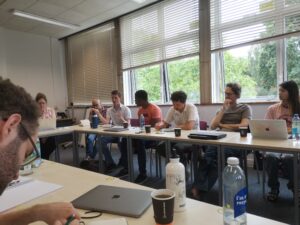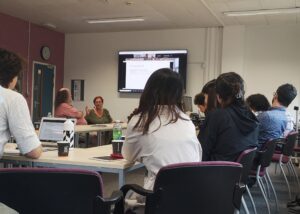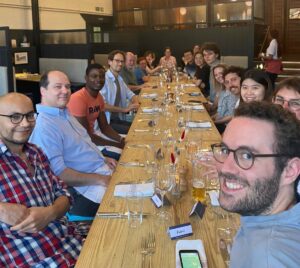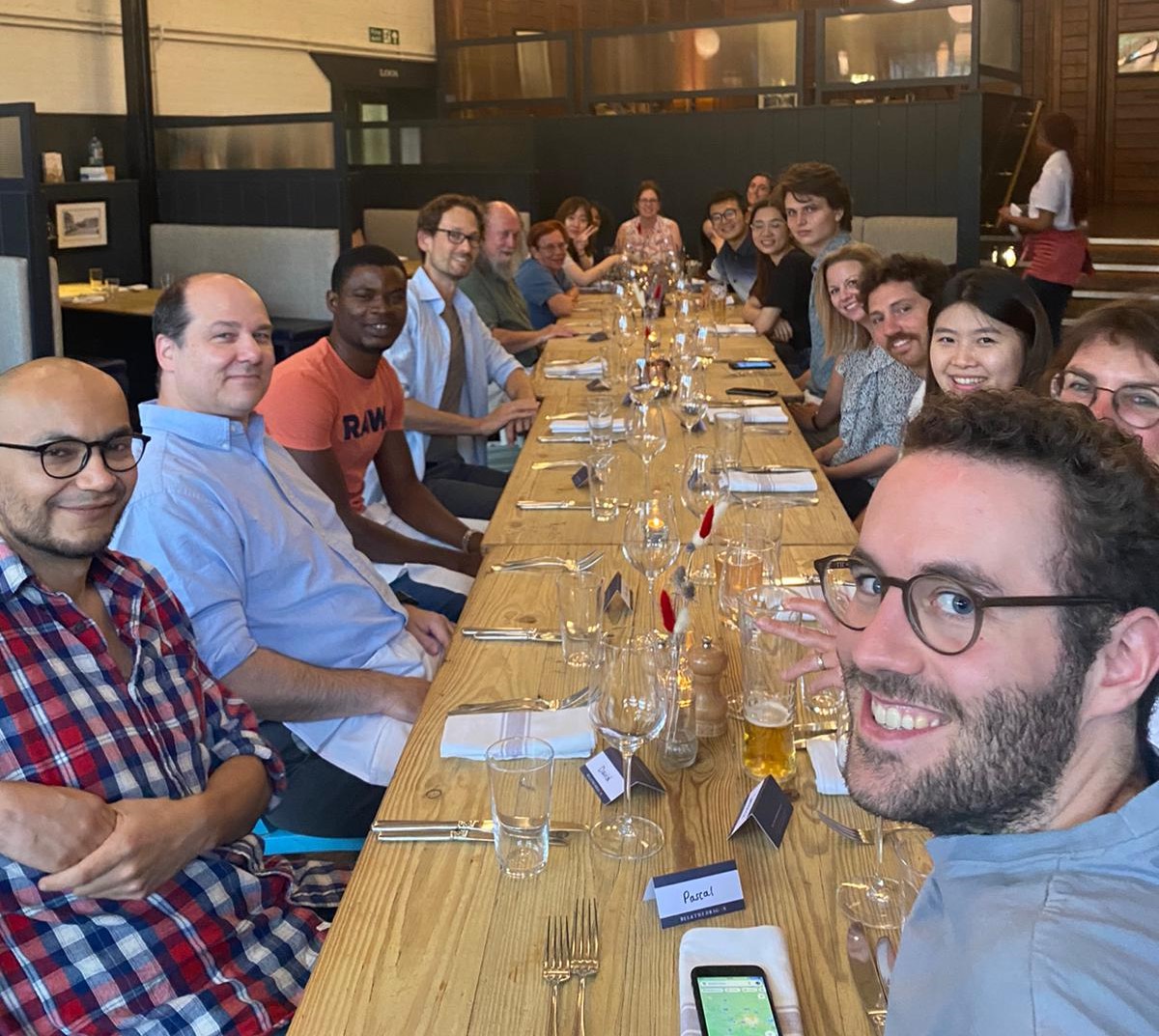Following on from the MMEE conference, members of the LEMONTREE team stayed for a further 2 days of project meetings. It is the first time the team has meet in person, with 20 people there in person and a further 17 joining remotely.
We kick-started the day with presentations from team members regarding specific aspects of the project.
Presentations from LEMONTREE team workshop
- Sungchang Jeong: Update on long-term VI RS data
- Catherine Morfopoulos: How remote sensing of VOCs can inform our knowledge of global photosynthesis
- Yunke Peng: Towards an integrative understanding of photosynthetic trait responses to experimental carbon dioxide enrichment
- Heather Graven: Bomb radiocarbon in the biosphere
- Nick Smith: Carbon nitrogen interactions
- Ning Dong: Optimal LMA and leaf nitrogen: from empirical tests to (dynamic) global maps
- Boya Zhou: Towards a global phenology model, informed by Phenocam data
- Ruijie Ding: Analysis of a global dataset of root-shoot ratios
- Rodolfo Nobrega: Accounting for optimal root-zone capacity in hydrological models
- Maoya Bassiouni: Optimal plant water use strategies explain soil moisture variability
- David Sandoval: Estimating transpiration costs using data from SapFLuxNet (TBC)
- Xu Lain/Jerry Fang: Reconstruction of a long-term spatially contiguous Solar-Induced Fluorescence data over 1982-2021
DISCUSSION SESSIONS
 Optimality and the leaf plant levels led by Nick Smith
Optimality and the leaf plant levels led by Nick Smith
The team discussed how best to link together the various components in nitrogen and water use research without making the model overly complicated. Factors such as drought, disturbance, plant stage (adding fertiliser before roots established/ after roots established) and whether the plant produces fruit, different timescale processes and acclimation, plasticity (both within an individual plant and within species variation), reproduction strategies.
During the summer of 2022, LEMONTREE PhD candidates Jan Lankhorst and Astrid Odé, are conducting fieldwork in Australia working on nitrogen fertilisation, CO2 and drought stress in greenhouses. They hope to explore the impact of fertilisation timing on water use efficiency.
Biophysical coupling of atmosphere, water and land led by Xu Liang
This session focussed on roots and root profile. The team discussed the need to move away from the current assumption in LSMs that root distribution is fixed, rather that the root profile changes over the season or over years to be optimal for the water and nutrient availability. Rodolfo Nóbrega is currently working on the optimality of root structure both spatially and temporally. Moving on from root profiles, the team discussed soil moisture and soil temperature. The role in fire modelling and the impacts of soil, stem and leaf temperatures.
Ecosystem properties and biogeochemical cycling led by Beni Stocker
 Beni explained how there is an issue at present with the P-model. In some locations in the temperate and high latitudes, it shows spring starting too early. We should shortly have a model of seasonal cycle of CO2 concentration and amplitude that will help solve this issue.
Beni explained how there is an issue at present with the P-model. In some locations in the temperate and high latitudes, it shows spring starting too early. We should shortly have a model of seasonal cycle of CO2 concentration and amplitude that will help solve this issue.
It was clear through these discussions that the are many existing datasets that the team are utilising but that there are still gaps in data that may require additional experimental fieldwork. It was time to draw up the dream list of data we would like to drive the project forward.
From plant function, biophysics and biogeochemistry to land-surface modelling. Led by Pier Luigi Vidale
The LEMONTRE team is not just trying to model the carbon components, but a more holistic view with water and surface energy fluxes included too. Pier led the team to think about to what extent do we want to retain the existing LSM framework. There are many services that needed to be considered such as canopy aerodynamics, radiation, tiled soils, and coupling of vegetation to catchment hydrology (using Hydro-JULES) and how to build in conservation of mass. There is a lot of complexity that needs to be considered whilst all the while, striving to maintain the simplest and most robust model. This is not an easy task.

Sandy Harrison led the team through a strategic planning for the year ahead and Colin Prentice through the challenges we face in the research at present.
Sandy was keen to remind the team that whilst LEMONTREE doesn’t have a set of deliverables that it must achieve, rather we have challenges and tasks that we created at the project inception to help us create better models. As the project develops, these tasks may change as we continuously come back to see if we can improve and strive for the best science.

It was great to have the team together and get focussed for the work that needs to be carried out in the year ahead. Thanks to all those that made the journey to Reading and for those that joined remotely for the 2 days.

